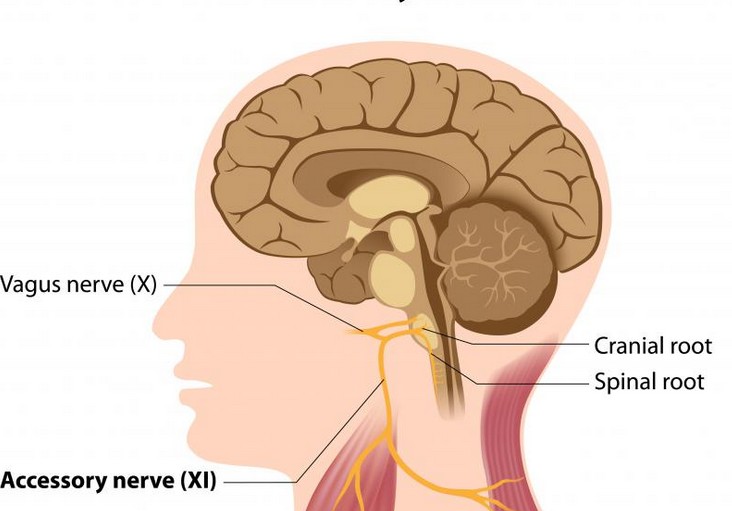Answer: The vagus nerve (cranial nerve X) is the longest cranial nerve, and it exits the medulla and proceeds posteriorly down to the rest of the body. It is important for parasympathetic control of the internal organs.
There are 12 nerves that enter and leave the brain. These are referred to as the cranial nerves. The tenth cranial nerve, also called the Vagus nerve, is the longest of the 12. It exits / enters the brain at the level of the medulla oblongata in the brain stem, then runs down through the jugular foramen, a large opening at the base of the skull. From there, it sends projections into the internal organs, including the heart, the eyes, the liver, the pancreas, and many others. This innervation is cholinergic, meaning it uses acetylcholine is the major neurotransmitter.
The vagus nerve is the major driver of the parasympathetic nervous system, one of the major divisions of the autonomic nervous system. The parasympathetic system is sometimes referred to as a “rest and relaxation” system, and is generally active when the body does not need to a respond to nearby threats. It is the opposite of the sympathetic nervous system, which mediates the “flight or fight” response.
The parasympathetic nervous system has actions on the internal organs that are opposite of the actions of the sympathetic nervous system. For example, the vagus nerve causes the pupils to constrict.
Historically, the word “vagus” means “wandering,” sharing the same root word as vagrant. The neurotransmitter acetylcholine was first identified by Otto Loewi who called it “Vagusstoff” when he demonstrated that a chemical was released by stimulation of the vagus nerve decreases heart rate.
